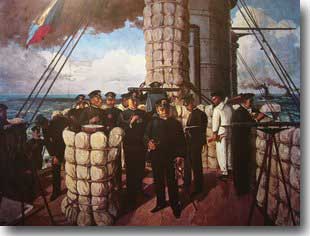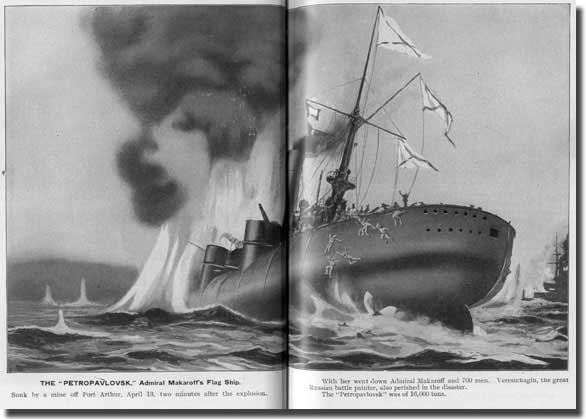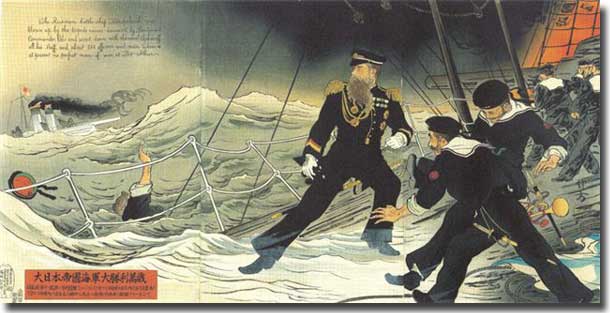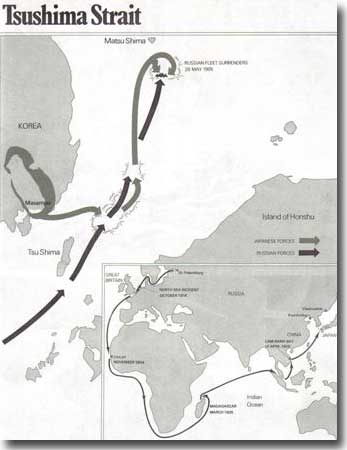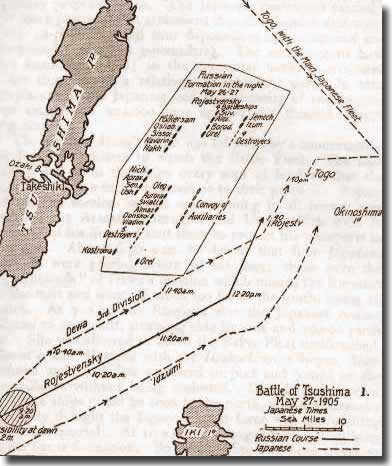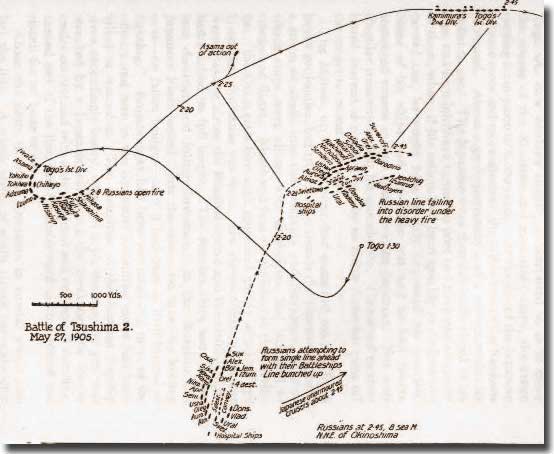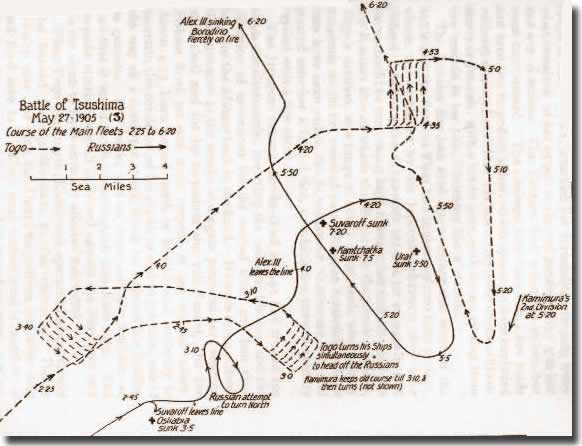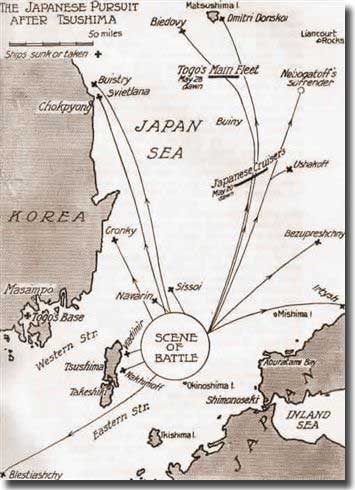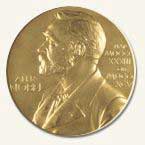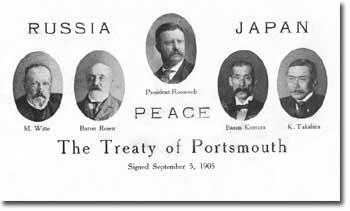|
Russia versus Japan. The Battle of Tsushuma Straits, 1905
Introduction. Russia and Japan.
Port Arthur. Vice Admiral Heihachire Togo.
On the evening of the 8th. of February, Togo sailed 10 Torpedo Boats with orders to attack the Russian ships anchored at Port Arthur. No war had been declared by Japan on Russia, it was the pre cursor to Pearl Harbor when on the 7th. of December 1941, Japan cowardly attacked the US Fleet without any warning. The Torpedo Boats approached with stealth to find the cruiser Pallada very conveniently illuminating the scene with her searchlights. The Russian ships were silhouetted nicely, like sitting ducks awaiting their fate. In two groups of five, the Japanese Boats unleashed their deadly torpedoes, to then escape seawards. The Results of this attack. On the 9th. of February Vice Admiral Togo's larger ships poured fire into the Russian Fleet, the Russians caught unawares were decimated, no word of war being declared. Only loss to the Japanese, 6 sailors died. As a result of this sneak attack, Naval power in the Far East shifted from Russia to Japan. Blockade.
On the 13th. of April, the Russian Vice Admiral Stephen Ossipovich Makarov tried to break out, but unfortunately his flagship Petropavlovsk struck a Japanese laid mine, blowing up, killing him plus 634 of her crew.
On the other side of the world. So jumpy were the Russian gunners, that in the North Sea passing a fleet of British trawlers they mistook them for Japanese destroyers, opened fire to sink one and damage others.
The problem of rebunkering the Russian ships. It was obvious that Port Arthur would soon fall to Japan, and when the fleet bunkered at Madagascar in March of 1905, it was ordered by St Petersburg to join up with the Third Pacific Squadron, which was really just a collection of rust buckets, commanded by Naval Officers who were mainly serving out their time, having been passed over for promotion. The rendezvous ordered was Cam Ranh Bay where the Fleet finally arrived on the 14th. of April. The long and tedious voyage at last over. Togo was aware of the arrival of the Russian Fleet, which when joined up with the Third Pacific Fleet now numbered 52 ships. He had believed that the Russian Admiral would make for Tsushuma Strait, and had posted patrols there to alert him. First contact is made. He now ordered Battle Order, and pressed on into the Straits. Both fleets were formidible, but it should be noted they contained a large percentage of tired old ships. The Russain count numbered the flagship Kniaz Suvarov plus 11 battleships, 4 heavy cruisers, 4 light cruisers, 9 destroyers and assorted auxiliary type vessels. On the Japanese page, the list read, the flag Mikasa, then 27 capital ships, 21 destroyers, gunboats and 70 torpedo boats. The Russians were outnumbered by just adding the ship totals available, but the huge Russian battleships could well carry the day via their heavy armament which might well counter the extra number of Japanese ships in this fight.
Let the Battle commence. Togo struck first, on the Tsarist port column as it was closer to Vladivostok, and he wanted to shut off that possible bolt hole, also the slower and weaker Russian ships made up that column. Togo crossed this column some 5 miles ahead, with the Russians opening fire and hitting the armoured cruiser Yakumo and Asama, the latter with damaged steering gear staggered out of the line, the end result, 3 Japanese ships hit. It appeared that the Russians had gained a crucial advantage, but it soon slipped from their grasp, the older ships could not maintain the cracking pace set, and started to falter and then fall behind. Now it was he turn of the Imperial Japanese Navy, as shells went crashing into the Russian flagship Kniaz Suvarov, fires broke out as smoke billowed skywards, their Admiral badly wounded, his ship in disarray as she slowed. Imperator Alexander 111, and Borodino were engaged, and the Japanese ships using semi armoured piercing shells tore open the hull of the Russian flagship allowing sea water to pour in through these breaches in her hull. The funnel now collapsed, and the maimed flagship listing, out of control was smothered by smoke and flames, her end seemed close at hand as torpedo boats closed in for the kill. Her wounded and unconscious Admiral was transferred to the destroyer Buiny, the flagship, pride of the Russian Navy mortally wounded, rolled on her side and sank. Out of the 5 new Russian battleships, only Orel was left afloat. Togo now called off his battleships ordering the torpedo boats to attack through the night as the remainder of the Russian ships sough the shelter of Vladivostok. A final shot from the battleship Fuji found its mark on Borodino, her boilers exploded, as she went down to the ocean floor a series of huge explosions followed.
Dawn on the 28th. of May.
Togo in his flagship Mikasa, his ships surrounding the enemy, knew victory was in sight. With the Russian Fleet battered, they lowered their colours and the international code signal of surrender, XGE fluttered to the masthead. Togo was amazed and suprised, a Japanese Admiral would never hoist such a signal, was it a trick? He decided to ensure his victory, and ordered his large guns to blast the Russian ships out of the water, but then, he could see the enemy was utterly defeated, Togo ordered a cease fire.
The final score card. All but 3 of the Russian ships that had sailed into Tsushuma Straits were sunk, captured or interned. The 3 limped into Vladisvostok. A Japanese Victory. The Russian Admirals face Court Martials. Conclusion. Russia sued for peace, and on the 5th. of September 1905, the Portsmouth Treaty was signed in that city in New Hampshire. It had been brokered by the American President Theodore Roosevelt.
Japan gained the Liaotung Peninsula, the port of Port Arthur, plus the southern part of Sakhalin Island, up to the 50th. parallel. The nation of Japan had arrived on the world stage.
|



